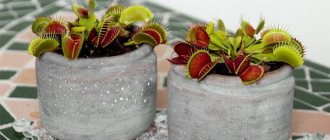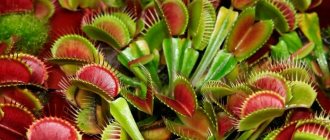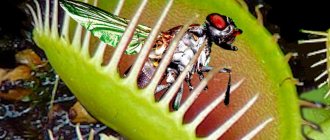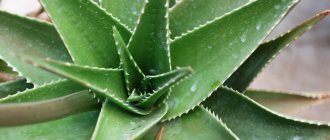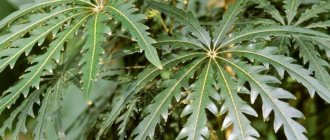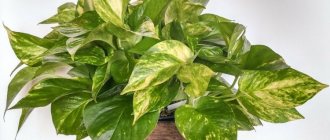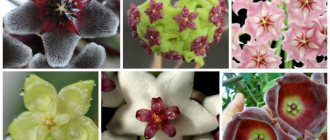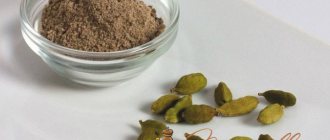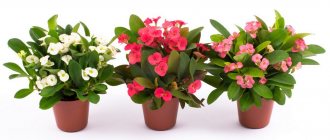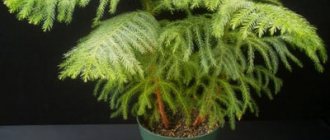If you decide to have a Venus flytrap at home, you will be pleasantly surprised by observing the life activity of the predator plant. If there are spiders and flies in the house, Dionaea will rid you of their presence. If not, you will have to catch the insects yourself and “feed” the exotic flower from time to time.
In any case, you will watch with interest the behavior of your non-standard green friend. Moreover, the older he is, the more saturated his color will be, changing from pink to dark red.
Home care
If you decide to keep a Venus flytrap at home, keep in mind that this predator is not so easy to keep. But if you provide the necessary illumination, humidity and temperature for the overseas guest, then the eccentric plant will take root and will also catch all the flies in the area.
Location and lighting
The American ward requires a lot of light. Dionaea should be exposed to direct sunlight for at least 4-5 hours a day. Therefore, an eastern window sill is ideal. But if you have to place a flowerpot on a south window, in the summer afternoon it is better to shade the exotic beauty by stretching, for example, a piece of gauze folded in several layers. The flytrap placed on the northern windowsill will have to be additionally illuminated.
In winter you will need a lamp anyway. Move a 40 W fluorescent lamp away from the bush at a distance of 15-20 cm. It is advisable that the light source and the pot with the plant do not change their location. Also be careful not to touch the sprouts with your hands. Even a light touch to the trap can be enough to make it wither.
Temperature
The temperature favorable for the Venus flytrap is within +25°C. But if it’s a little more or less, it’s not scary. The southern guest can withstand even 35-degree heat. In winter, the plant requires a slight decrease in degrees. At the same time, try to protect your exotica from drafts.
With the onset of autumn, the flower should begin to be prepared for the dormant period. Gradually reduce the air temperature to +10-15 degrees and bring the result to +5°C. At the same time, reduce daylight hours to 8-9 hours. If there is an insulated loggia, move the pot or aquarium with your pet there.
If there is no such place, you can put it in the refrigerator. Before this, spray and pack together with the flowerpot in a bag. Don't forget to poke holes in it in several places for ventilation. Make sure that the temperature inside the unit is between 0°C and +5°C. In this case, the flower will not need artificial additional lighting. But it is necessary to water once a month.
As soon as you notice the appearance of wide leaves close to the ground and small traps, it means that Dionaea is ready for wintering.
If a Venus flytrap hibernates on the balcony, there is no need to bring it out of its sleep state. But if you packed it in the refrigerator, after three months, remove it from the bag and place it in a cool place, pointing a lamp at the plant. At first, light it 10 hours a day. But gradually bring it up to 16. Also increase the air temperature gradually. When completely “awakened”, transplant into a new substrate.
Watering
If you do not want to destroy Dionaea, never water the plant with tap water. She can only accept rain or boiled water with gratitude. You can also use distilled. To avoid rotting of the roots, make sure that the soil in the pot is always moist, but not excessively wet. This is a rare case when watering is required even at rest.
It is best to carry out the procedure from below, since by watering from above, you can achieve compaction of the soil, which means a lack of oxygen. Place the pot with the flytrap in a tray of water so that liquid constantly flows into the drainage holes.
Air humidity
Since the Venus flytrap prefers high air humidity, it makes sense to plant the plant in an aquarium that is not being used for its intended purpose. Line the bottom of a transparent bowl with expanded clay, which should be watered constantly. This way, the atmosphere necessary for a swamp lover will circulate in the container. But under no circumstances should you put a lid on top of the container, otherwise the person under your care will suffocate.
If it is not possible to use a fish house, and the room is too dry, moisten the soil as often as possible. The plant will also be immensely grateful to you for spraying 1-2 times a week.
The soil
In the swamp, where the flycatcher usually grows, the soil is breathable, but poor in minerals. Therefore, a soil mixture of sphagnum moss, coconut peat and quartz sand, taken in equal proportions, is quite suitable for it. Be sure to line the bottom of the pot for your pet with a drainage layer.
If there is no moss, you can get by with two components, just take 2 times more peat than sand. Do not use any other sand except quartz if you do not want your ward to die. Before putting it in a flowerpot, be sure to rinse it in running water.
Feeding and fertilizers
The Venus flower is accustomed to poor, swampy soil, so applying fertilizer will only make it worse. And he will receive the necessary nutrients, coupled with nitrogen, by swallowing and processing
poking live insects.
Feeding
In indoor conditions, Dionaea will have to be fed. Just keep in mind that beetles with a hard shell, earthworms, and rodents are not suitable for feeding a delicate flower, as they can injure the trap. Don’t try to serve sausage or meat either.
During the growing season, let your pet eat small spiders, flies or mosquitoes. Just don’t overdo it: 2-3 insects for the entire season will be quite enough. If you want to treat more often, do it once every two weeks. They must be alive and at the same time half the size of the trap. If the flower grows in an aquarium, you can put the living creatures directly there, covering it with glass for a while. Let the flycatcher hunt on its own.
From September to March there is no need to feed. Also, you should not feed the flytrap immediately after replanting or if the bush is sick or weakened.
Transfer
The Venus flytrap should be replanted every spring when the plant comes out of dormancy. Select a flowerpot no deeper than 10-12 cm. It is advisable that it be narrow. If the pot is 7.5 cm in diameter, then you can plant several young bushes at once. Just be very careful when handling the tops to avoid setting off the traps.
Carefully remove the plant from the pot and shake off any remaining soil. If there is soil left on the roots, place it in water for a while to wash it off. Spray the foliage with a spray bottle.
Pre-disinfect the prepared substrate and plant the Venus flytrap in it. Now leave the bush alone for five weeks to adapt to the new place. At this time, place the pot in the shade, but do not stop watering.
Features of the Venus flytrap
The perennial flower Venus flytrap is an insectivorous herbaceous plant that belongs to the Sundew family. This genus includes only one species. An adult bush reaches a height of no more than 15 centimeters. The plant has a bulbous stem. During flowering, a tall peduncle appears, on which a corymbose inflorescence is formed, consisting of white flowers. Since under natural conditions such a predatory flower grows in soil in which the nitrogen content is very low, it obtains this element from mollusks (or rather, slugs), as well as from various insects.
From a short underground stem, 4–7 leaf blades grow, which form a rosette. After the bush fades, it begins to grow traps. Their length can vary from 8 to 15 centimeters, and they are colored green, however, under intense lighting, the color of their internal cavity becomes reddish. The formation of traps is observed at the tops of short petioles, which are collected into a rosette. The length of the petioles gradually increases and over time they occupy a vertical position. The trap consists of 2 slamming doors, along the edge of which there are very sparse bristles. The trap has glands inside that are capable of producing nectar, which is what attracts the prey. There are also 3 triggers on the edge of the trap. After they are irritated by the insect, the trap will abruptly slam shut, and the Venus flytrap itself will begin to produce digestive secretions. The plant is able to digest its victim in 5–10 days, and then it will open the trap leaf again. One trap can digest 2-3 insects, and then it dies. But it also happened that the same trap was able to digest 7 victims in a row.
Venus flytrap. Caring for Dionea
Reproduction
There are many methods for obtaining new flycatchers. You can do this:
- seeds;
- shoots;
- leaf cuttings;
- bulbs;
- dividing the bush.
You can try any of them.
Seeds
Seeds of predators do not differ in a high level of similarity. So before planting, it is advisable to carry out a stratification procedure. To do this, line the bottom of a plastic cup with a napkin soaked in fungicide, pour seeds into it and place it in the refrigerator (not freezer!) for 1-2 months. Make sure the napkin is damp at all times.
After this, sow on top of a mixture of sphagnum moss, perlite and coconut substrate, without dripping and constantly spraying with a spray bottle. Cover with glass and place in a warm (+24-29°C) place, with good lighting (14-16 hours a day).
After two to four weeks, the seeds should germinate. Make sure the soil is constantly moist.
As soon as the first leaf appears, begin to remove the cover for ventilation, and then transplant the sprouts into separate pots. Be careful with the roots as they are very fragile.
By shoots
Cut off a Venus flytrap shoot without a trap and plant it in the peat mixture. The sprout should not stand perpendicular to the ground, but be on a slope. Cover with a glass jar on top for a greenhouse effect. Keep the humidity inside around 100%.
It should germinate in about a month. After 2-3 months, the seedling will take root well, and it will be possible to transplant it to a permanent place.
Leaf cuttings
After cutting a leaf from an adult bush, treat the cut with root, and place the cutting in a mixture of peat with the addition of quartz sand. It needs to be placed at an angle of 45 degrees. Place in a sunny place, just keep in mind that the light should be diffused. Stretch cellophane over the top, creating the illusion of a greenhouse.
In such conditions, the seedling should remain for about three months until it sprouts young shoots. After this, you can transplant it into a pot.
This propagation method is complicated by the fact that cuttings are often susceptible to fungal diseases.
Onion
To grow a young plant from a bulb, you need to create greenhouse conditions for your pet. The bulb should not be completely placed in the substrate so that the place where the sprout will appear is above the ground level. The humidity must be constantly increased, otherwise it will not be possible to grow a new Venus flytrap.
Dividing the bush
Having noticed in the spring that many children have appeared, you can plant some of them. Just don’t get carried away and take everything away from the mother plant. Your ward loves to surround herself with young shoots and will not tolerate barbaric treatment.
Try to act carefully without touching the traps, otherwise they will close. Pull the bush out of the pot, shake the roots off the ground and easily separate the babies. If they “don’t want” to share, use a sharp, pre-sterilized knife.
Plant the rosettes individually in small flowerpots. Keep in shade until they germinate.
Venus flytrap blooming
How to care during the flowering period
The Venus flytrap blooms in May or June. The bush grows long peduncles, at the top of which corymbose-shaped inflorescences are formed; they contain white flowers, which reach about 10 mm in diameter and have a sweetish odor. The bush blooms for several weeks. If you don't want seeds, then cut off all the buds from the bush before they open. The fact is that flowering takes a lot of energy from the plant, and therefore the development and growth of its traps worsens.
Winter care
With the onset of autumn, new leaves stop growing, and the flower itself begins to prepare for a dormant period. The plant needs to be helped to go into hibernation; to do this, it will be enough to reduce the number and frequency of watering, and the water now needs to be poured out of the pan. In winter, the bush should be kept in a shaded place, where it should be quite cool (about 7–10 degrees). For example, the plant can be moved to a closed loggia, and if desired, it can be placed along with the pot in the bottom drawer of the refrigerator. Throughout the winter, the flower does not need either light or nutrients. However, the Venus flytrap needs to be watered in winter, but this is done very carefully and rarely, since if water stagnates in the substrate, the root system can rot. During the dormant period, the bush completely loses its decorative effect: its foliage turns brown and dies.
In the first half of March, the bush is moved to its permanent place, after which all the traps remaining from the previous growing season are cut off. Then they begin to care for it in the same way as is necessary in the warm season. But remember that the bush will begin to grow intensively only in the last days of May.
Diseases and pests
Dionaea, like any other indoor plant, can succumb to attacks from parasites from time to time:
- Spider mite. This reptile attaches itself to the plant from below, straining the juice from the leaves and weaving a web. As soon as you notice the pest, immediately treat the ward with a soap solution and spray it. After 6 days, repeat the procedure. You can use store-bought products.
- Aphid. A colony of parasites cannot be ignored. They lead to deformation of Venus flytrap traps. Parts of the plant that are particularly damaged by the pest will have to be removed, and the bush will have to be treated with an infusion of mustard, marigold or dope. If the aphids do not disappear after this treatment, resort to chemicals.
- Chervets. The pest itself and its cocoons will have to be collected manually using a paper napkin. You can use a cotton swab dipped in alcohol - this is a fatal procedure for the mealybug. Spraying with a soap solution should also lead to positive results.
Care errors
- The flower loves water treatments, but if you water it too often, gray rot may appear. In this case, the damaged parts of the plant will have to be removed, and the remaining bush will have to be treated with a fungicide.
- Strong phlegm can cause black sooty fungus to develop. You can get rid of it using the same fungicides, and in the future, monitor the living conditions of the green pet.
- Gray fluff on the surface of the plant means an invasion of botrytis. It develops due to stagnation of moisture in the substrate. Rescue measures are the same: pruning damaged parts and treating with fungicide.
- If the Venus flytrap fails to completely digest the insect, rotting occurs and the trap turns black. The affected area should be urgently removed and the entire plant should be treated with a fungicide.
Trap closing mechanism
The underside of the leaf feeds on light, and the upper trap doors provide the plant with living food. In summer, the traps are painted bright burgundy, which attracts insects. In addition, the trap cells secrete a special protein - a sticky substance. The insect, getting inside the leaf of the predator flower of the Venus flytrap, crawls along the slippery and sticky surface, touching small hairs that signal the trap to slam shut.
If an insect touches a hair twice in a row or two hairs at the same time, the trap immediately slams shut. After this, the compression phase begins, the valves are pressed tightly against each other, digestive enzymes are released and the insect is gradually digested. This takes from 5 to 12 days. The process of digesting prey depends on the age of the trap, the insect and the ambient temperature.
Nutrients are absorbed by the tissues of the Venus flytrap. After this, the trap opens again. Ideally, the insect should be one-third the size of the trap. Very small prey can escape, but too large can kill it. The remaining insect skeleton is washed away by rain or blown away by the wind, but can also serve as bait for others. During its life cycle, each trap catches up to seven insects.
Folk signs
With its trap, the Venus flytrap is able to “catch” a groom for an unmarried girl. So the candidate for husband should definitely be brought into a room with a predator plant, and he will no longer be able to leave you.
If there is no bride in the house, this is not a reason to refuse to breed exotics. After all, the predator “recognizes” people with bad thoughts. And these energy vampires will not be able to stay in your home for long.
Dionea will help businessmen figure out whether the people standing in front of them are partners or scammers.
As you can see, this representative of the Rosyankov family is so unusual and exotic that it definitely deserves your attention.
What does a flower look like, what family does it belong to?
The Venus flytrap (Dionea muscipula) belongs to the perennial herbaceous insectivorous plants. This is the only representative of its genus from the Rosyankov family (Droseraceae). The Latin name "muscipula" translated into Russian means "mouse trap", probably the botanist who gave the species name to the flower wanted to write "muscicipula" (fly trap) and was mistaken.
Scary appearance of the plant
History of appearance
This plant predator was originally named after Venus, the goddess of plants and love in Ancient Rome, and in Greek mythology, Dione was the mother of Aphrodite.
The natural habitat of the flycatcher is the peat bogs of North and South Carolina, USA. In nature, the number of plants of this species is rapidly decreasing due to human activity, but the Venus flytrap is widespread and in demand among gardeners all over the world.
Insectivorous plant in the wild
Dionaea leaves are collected in rosettes growing from a short, bulbous stem underground. Each plant has 4-7 elongated leaves, at the end of which traps are formed. Such specific leaves consist of two valves and are able to close due to long thin bristles located along the edges. By folding, the flaps hold the caught prey inside and do not allow it to escape.
An insect caught by a flytrap will not be able to escape from the trap.
The characteristic color of the flower is green. The traps have a similar color, but may appear reddish on the inside in good light.
Common varieties
In addition to the characteristic shape of the plant, breeders have developed many different varieties, differing in color and size. Eg:
- Dantate Trap. The bush is painted green, with a red stripe running along the front side of the leaves. Leaves and traps are located almost vertically.
- Giant. The peculiarity of this variety is that the size of the traps is more than 5 cm, and in bright light they turn purple.
- Akai Riu. In this variety, not only the traps, but also the leaves are colored red.
- Regyula. The green leaves of the bush are diluted with traps of red and purple shades.
- Bohemian Garnet. A dark green bush with wide leaves that cover the surface of the entire substrate; traps are also placed vertically.
- Funnel Trap. The young bush is colored green, and as the leaves of the plant mature, they acquire a red tint.
- Crokedile. The leaves of the flycatcher are arranged horizontally. Young traps have a pale pink tint, after a while they turn red.
- Triton. The variety is distinguished by its unusual shape of traps. They are elongated, and their teeth often stick together.
- Dracula. The green bush has traps with a red cavity, the cloves are short.
Medicinal properties
Dionaea is not medicinal. Contraindications to its use have not been studied in medicine.
Note! The use of the flytrap not only internally, but also externally is not recommended.
